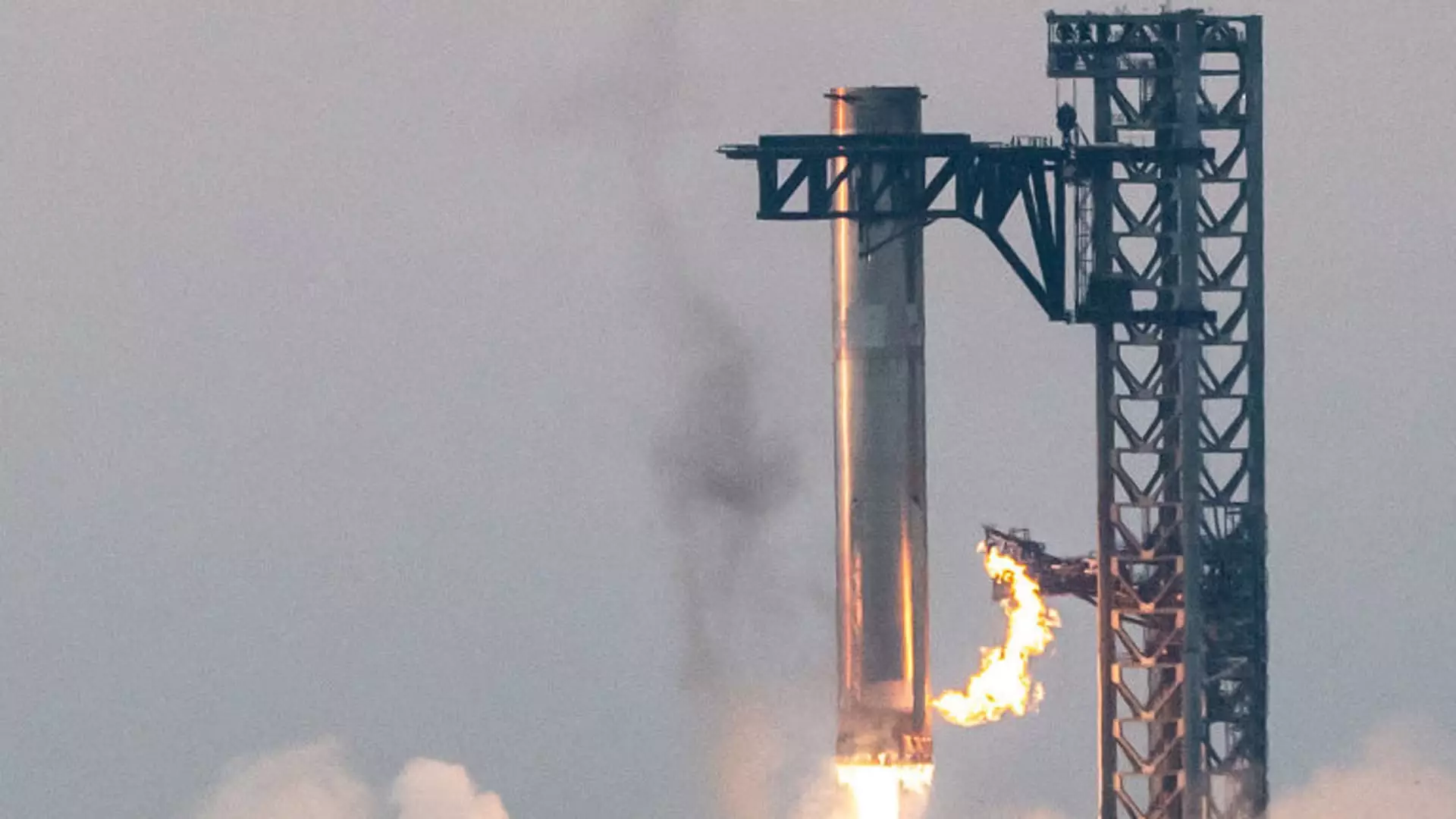On a momentous Sunday morning, SpaceX achieved a significant milestone with its fifth test flight of the Starship rocket. At 8:25 a.m. ET, the ambitious program took another leap towards its ultimate goal of creating a fully reusable rocket system. The most notable highlight from this launch was the successful capture of the Super Heavy booster, a component towering over 20 stories tall, which landed on the arms of the company’s launch tower approximately seven minutes after liftoff. According to Dan Huot, a communications manager for SpaceX, the sight was almost surreal — “What we just saw, that looked like magic.”
This accomplishment is not merely an engineering feat, but a vital step in demonstrating the potential of reusable space travel, a concept that could fundamentally alter our approach to spacecraft design and efficacy. NASA Administrator Bill Nelson underscored the significance of this breakthrough in a social media post, indicating that such successful tests are integral to the ambitious Artemis program, which aims to return humans to the Moon.
After separation from the Super Heavy booster, Starship launched itself into space to complete its mission, traversing halfway around the Earth before descending back into the atmosphere and landing as intended in the Indian Ocean. Notably, the flight was unmanned, emphasizing SpaceX’s approach to safety and testing. The company plans to conduct hundreds of missions with Starship before carrying any passengers.
Historically, the Starship system has been trialed in four previous test flights, with each succeeding flight reaching new benchmarks in technology and performance. This indicates SpaceX’s commitment to progressive learning and improvement, encapsulated by their mantra of building upon lessons learned from earlier missions. This iterative approach will undoubtedly enhance their ability to launch cargo and possibly people far beyond our planet’s boundaries.
Significantly, the function of Starship is not limited to simply launching payloads into orbit. SpaceX has secured a multibillion-dollar contract from NASA to use Starship as a lunar lander for their esteemed Artemis program. The intersection of NASA’s goals with SpaceX’s advances propels both organizations into a new era of exploration, showing potential for collaborative efforts in achieving both commercial and governmental space objectives.
However, regulatory hurdles have also accompanied SpaceX’s ambitious visions. Recently, the Federal Aviation Administration (FAA) granted the company a license to proceed with the test flight sooner than initially expected, yet SpaceX’s leadership lamented delays caused by what they termed “superfluous environmental analysis.” Despite these critiques, mitigating environmental concerns remains vital for any company in the aerospace sector, a lesson that both SpaceX and its competitors must navigate carefully as they push towards the future.
The intricacies involved in the successful catch of the Super Heavy booster illuminate a significant and complex engineering challenge. According to SpaceX, the execution of the booster catch involved meticulous planning and testing — technicians and engineers devoted tens of thousands of hours to design and build the necessary infrastructure. Achieving this catch encompasses meeting a multitude of criteria; if conditions had not aligned perfectly, the booster would have had to divert to a splashdown in the Gulf of Mexico.
SpaceX takes pride in its commitment to safety and ensures rigorous checks are in place before attempting any ambitious maneuver, including the booster catch. This stringent protocol highlights the balance between innovation and responsibility, a crucial aspect in the evolving realm of space technology.
Starship stands as the tallest and most powerful rocket ever launched, measuring 397 feet in height and 30 feet in diameter when fully stacked atop its Super Heavy booster, which itself is 232 feet tall and equipped with 33 powerful Raptor engines. Together, these engines unleash an astonishing 16.7 million pounds of thrust — nearly double that of NASA’s own Space Launch System.
Furthermore, Starship comprises its own set of six Raptor engines, demonstrating a strategic separation of capabilities for atmospheric and vacuum operations. Built to utilize liquid oxygen and liquid methane, the rocket’s fuel system necessitates over 10 million pounds of propellant for launch, showcasing the scale and ambition behind the Starship initiative.
As we stand on the brink of a new frontier in space exploration, SpaceX’s developments in the Starship program not only promise significant advancements in technology but signal a transformative era where the possibilities beyond Earth appear more vivid than ever. With continued successes and milestone achievements, the narrative of space travel is being redefined, and we can eagerly anticipate what lies ahead.



Leave a Reply